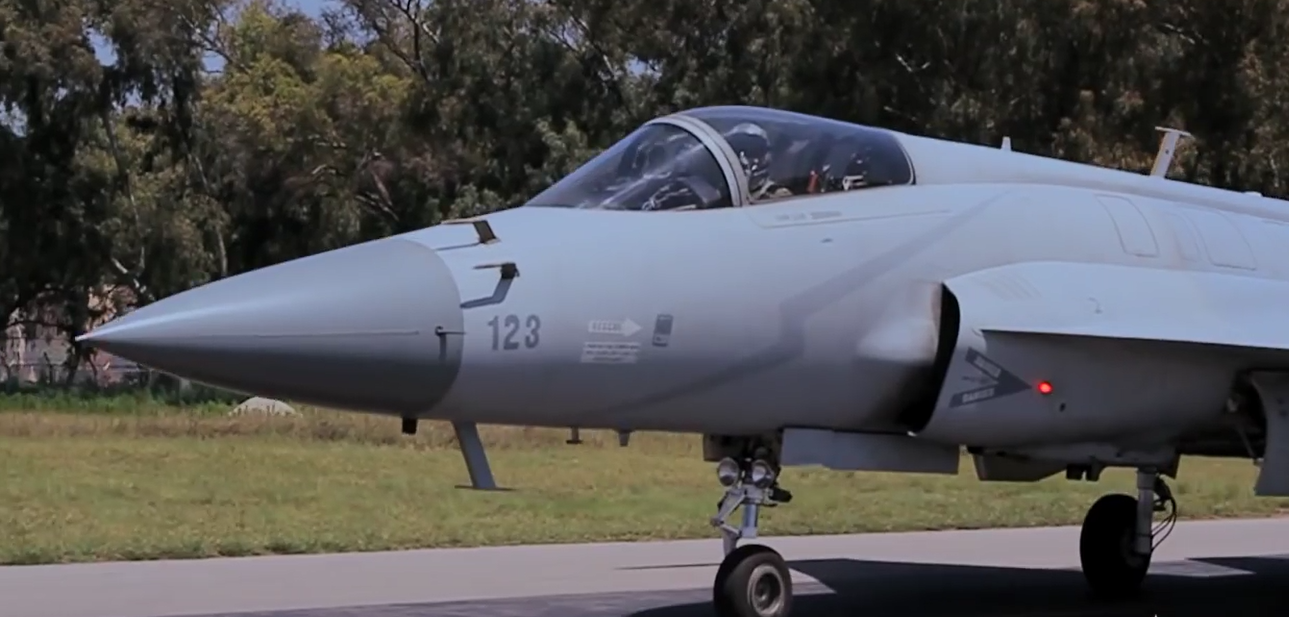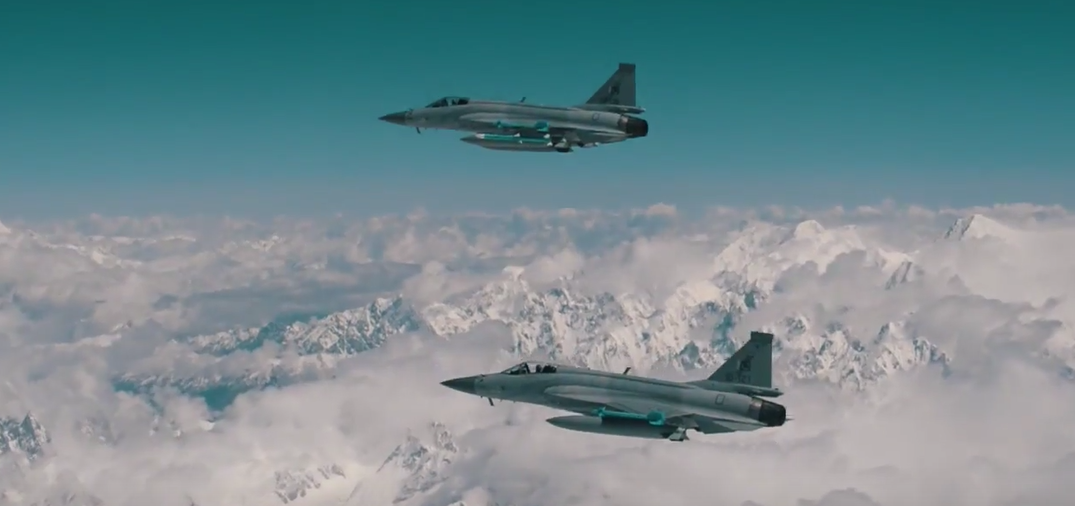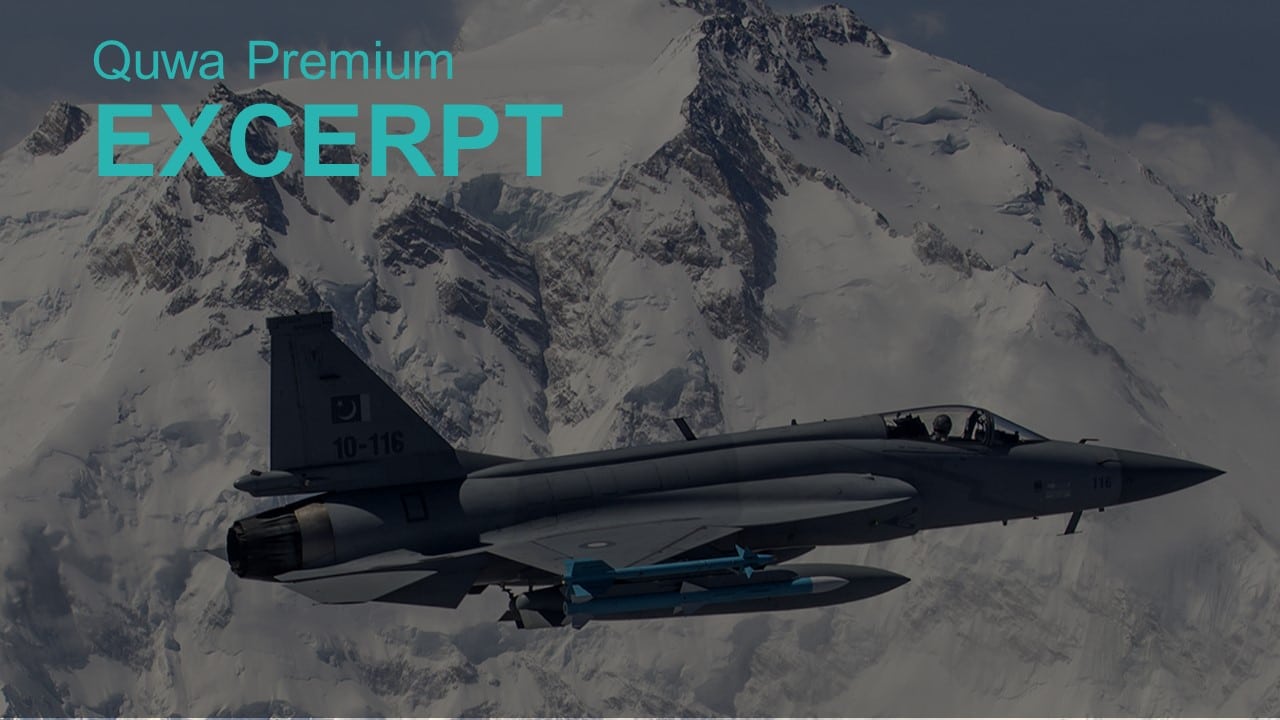2616Views 4Comments

Could Italy’s Selex ES Equip the JF-17 Block-III?
08 February 2016
By Bilal Khan
The following is a look at a possibility more so than actual news. That said, there is some basis to this idea, and that is from a statement made by Air Vice Marshal (AVM) Arshad Malik, the Chief Project Director of the JF-17 program, on an article released during the 2015 Paris Airshow. In that article, AVM Malik stated that Selex ES (owned by the Italian defence giant Finmeccanica) was one of the competitors for the JF-17 Block-III’s active electronically scanned array (AESA) radar requirement (see “JF-17 Thunder: Pakistan’s Multi-Role Fighter” written by Alan Warnes).
The fact that Selex ES is (or at least was) a contender for providing the AESA radar solution for the JF-17 raises several interesting questions. First, could the radar also include a complete avionics suite? Second, would the PAF simply be looking at an existing off-the-shelf solution, such as the Vixen 1000E, or could it also be inquiring about a tailor-made solution?
The reason why the case for a ‘complete and tailor-made solution’ could be made is because Selex ES has the capacity to develop and offer a complete end-to-end suite. Take for example the Gripen-E/F (also known as the Gripen Next Generation or NG for short). Finmeccanica developed the Raven ES-05 AESA radar, Skyward-G infrared search and track (IRST), and BriteCloud digital radio frequency memory (DRFM)-based ECM system (for active radar-homing threats) for that fighter.
Selex ES markets the Raven ES-05 as being “designed from the outset to meet worldwide fire control radar detection and target tracking needs combined into one efficient modular system.” One interesting thing about this radar is that it is a swashplate solution, which enables the system to boast very good ‘wide field of regard’ (WFoR) angles. In other words, compared to a fixed-plate AESA, the moving-plate Raven is capable of wider tracking angles, ±100º WFoR to be specific. Besides that, the Raven ES-05 is a good standard-fare AESA system, i.e. it includes the air-to-air, air-to-ground, and air-to-sea engagement modes one would expect from a modern-day fighter radar.
The Skyward-G is Selex ES’ latest in IRST technology. It is marketed as a lightweight system (<55 kg) capable of air-to-air, air-to-surface, and air-to-sea tracking of up to 200 targets. Selex ES states that the Skyward’s feed can also be pushed to the pilot’s helmet-mounted display and sight (HMD/S) system. An earlier article discussed the virtues of IRST. Generally speaking, a passive sensor would enable the JF-17 to engage (especially in close-quarters) without necessarily having to depend on its radar. Radar-silence would enable the Thunder to cut its electronic noise as well as better protect it against enemy EW and ECM techniques.
The BriteCloud is a DRFM-based expendable decoy designed to be deployed from a fighter’s flare and chaff dispensers. The BriteCloud was designed to thwart active radar-guided missiles (i.e. beyond-visual range air-to-air missiles or BVRAAM for short) by using DRFM-based jamming techniques. Besides being a self-contained expendable system, Selex ES markets the BriteCloud as a solution with “zero-integration costs”, which is possible because the decoy would use the fighter’s existing dispenser system. Of all the Selex ES systems potentially available to the JF-17, this would be the most affordable and feasible to integrate, even onto existing Block-I and Block-II fighters.
This is not to suggest that Selex ES would be asked to develop an exact identical solution for the JF-17 Block-III (especially in terms of the Raven), but the company evidently has the competency to develop a tailor-made suite for the PAF if the PAF requests (and pays) for it. Embracing Selex ES’ competency and experience in this area could be of considerable benefit, at least from a basic technical standpoint. The fact that these systems have been embraced by Saab for use on the Gripen NG is indicative of their performance and quality (in terms of long-term maintenance).
The inclusion of the aforementioned systems could position the JF-17 Block-III as a very effective platform, (especially if one looks at it from the perspective of the Thunder using subsystems that are similar to those used on the latest Gripen variants). While cost is a serious issue, the PAF has earned itself considerable space in that regard by driving a significant proportion of the production and assembly of the JF-17’s airframe domestically. Compared to an off-the-shelf purchase of the Gripen-E/F, the JF-17 (even with similar subsystems) would still be much more affordable, though it would be pricier in absolute terms compared to the Block-III equipped with Chinese subsystems.
There are major caveats. Given Pakistan’s structural economic limitations and uncertainties, going the Selex ES x route could simply be too cost-prohibitive. It is unclear to what extent the Italian firm could connect the PAF to a workable payment plan. That said, the gradual nature of the JF-17 induction process could allow for incremental acquisitions, which could be feasible if contained to the core suite of on-board electronics. Moreover, the use of this variant in the PAF could also spur export orders of the Block-III, which in turn would mean more business for Finmeccanica. In a sense, there is overlapping incentive and interest to see such a sale (between Finmeccanica and PAF) come to fruition.
One might also raise the issue of potential leaks from Pakistan to China, particularly in terms of intellectual property and sensitive technology. To be fair, such an issue can be alleviated through engagement. In other words, close cooperation and tight consultation between Finmeccanica, Selex ES and Pakistan Aeronautical Complex (PAC) will alleviate such risks. The evidence for this is the fact that numerous Western firms already have strong technical ties with their Chinese counterparts, the joint Airbus-Harbin EC-175 helicopter is a good example.
The JF-17 Block-III seems to have more riding on it than being just an extension of the Block-II (which was a continuation of the Block-I). A cursory glance of some of the subsystems planned for this variant, such as AESA radar, suggest that it is a major update of the platform. According to Pakistani officials, the JF-17 Block-III will be “game changer”, which lends a meaningful sense of hope that perhaps the best available subsystems are under consideration. For that reason, we may very well see Finmeccanica return to the PAF’s orbit in the coming years.



4 Comments
by jigsaww
Something tells me that PAF will go for the Chinese solution when it comes to the radar and possibly avionics suite. This is especially true if the chinese NAV has been able to successfully develop the alleged copy of the Israeli Elta 2052, which possibly boasts better specs than the selex competition. The other fact being PAF never went the way for upgraded models of grifo series for JF-17 block 1 and 2, instead chose the chinese radar for better performance. There is also indian and UK angle to Selex. Selex has local presence in india and is supplying radar and other solutions to indian navy. For PAF buying off the shelf solution from selex would face fierce resistance/extortion from india as usual. If PAF wants to go selex way, it will have to come up with a ROSE type long term program for JF-17 that guaranteed strong partnership for selex over the years. Italy has been a good supplier to Pakistan. Pakistan will have to make sure that the partnership goes unaffected despite indian pressure. This can be done only by forging partnerships on long term than off the shelf buys.
by srmklive
Exactly what i think PAF should do. JF-17 Block III is gonna be a major milestone for PAF, as it is gonna be the frontline attack aircraft in the future. I personally think PAF should seriously consider the Selex AESA & IRST solutions for JF-17 Block III.
by SP
Buying anything from any other country than China means that cutting edge technology needs to be provided to Pakistan which I dont see happening. Secondly that same technology would be available to India. Since Pakistans next advanced fighter will come from China in all probability then Pakistan should work with the Chinese for solutions. There was a time when China was far behind Western countries but that is no longer the case so the option of buying expensive and inferior technology from the West makes no sense in todays world.
by Sami Shahid
Lets see if Italy agrees….but Italian technology is also good